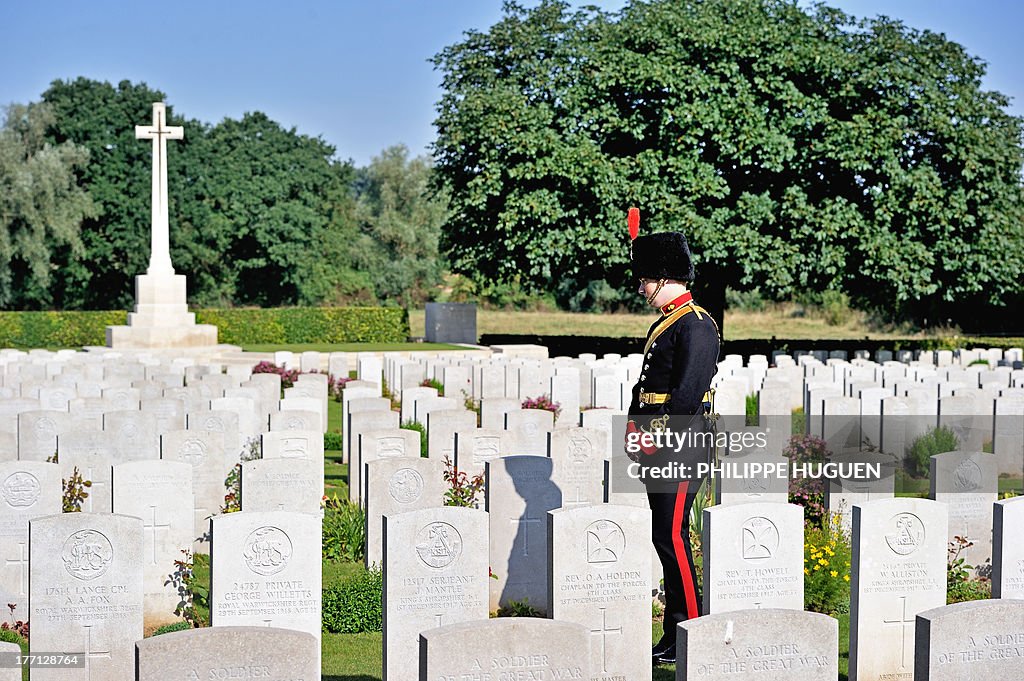WWI-100TH-ANNIVERSARY-VILLERS PLOUICH
An unidentified British army soldier pays his respect on August 21, 2013 after the burial of an unknown soldier at the Fifteen Ravine British Cemetery in Villers-Plouich, northern France. "Fifteen Ravine" was the name given by the Army to the shallow ravine, once bordered by fifteen trees, which ran at right angles to the railway about 800 metres south of the village of Villers-Plouich. The cemetery, sometimes called Farm Ravine Cemetery, was begun by the 17th Welsh Regiment in April 1917, a few days after the capture of the ravine by the 12th South Wales Borderers. It continued in use during the Battle of Cambrai (November 1917) and until March 1918, when the ravine formed the boundary between the Third and Fifth Armies. On 22 March, the second day of the great German offensive, the ground passed into their hands after severe fighting, and it was not regained until the end of the following September. In March 1918, the cemetery contained 107 graves (now Plot I), but it was greatly enlarged after the Armistice when graves were brought in from the battlefields south-west of Cambrai and other cemeteries. AFP PHOTO / PHILIPPE HUGUEN (Photo credit should read PHILIPPE HUGUEN/AFP via Getty Images)

PURCHASE A LICENSE
How can I use this image?
€475.00
EUR
DETAILS
Restrictions:
Contact your local office for all commercial or promotional uses. Full editorial rights UK, US, Ireland, Italy, Spain, Canada (not Quebec). Restricted editorial rights elsewhere, please call local office.
Credit:
Editorial #:
177128764
Collection:
AFP
Date created:
August 21, 2013
Upload date:
License type:
Release info:
Not released. More information
Source:
AFP
Barcode:
AFP
Object name:
Par7638574